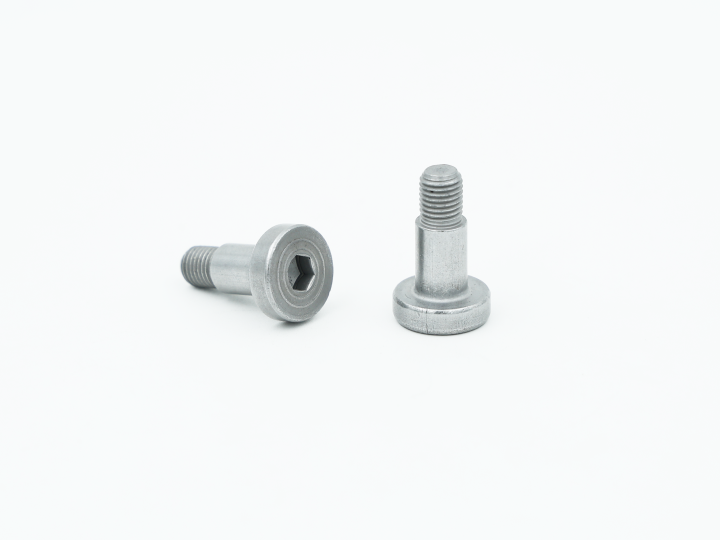Precision Engineered Solutions: How Proper Selection of Shoulder Bolts Prevents Catastrophic Failures and Extends Mechanical Assembly Lifespan in Critical Applications
Mechanical assemblies with moving components can succeed or fail based solely on fastener choice. Picking the wrong type might result in early wear, joint failure, or worse – complete system collapse when least expected.
Shoulder bolts play a crucial role in numerous engineering applications because of their distinctive design featuring an unthreaded shoulder between the head and threaded section. This design difference completely changes load distribution and component interaction within assemblies. Too many projects suffer needlessly when engineers realise too late that standard fasteners simply won’t do the job.
The Distinctive Nature of Shoulder Bolts
Standard bolts secure parts through clamping force, but shoulder bolts deliver both a clamping function plus a precision bearing surface. That smooth cylindrical shoulder acts like a shaft, enabling components to rotate while maintaining exact alignment.
This dual-purpose design makes them particularly suitable for:
• Creating pivot points in mechanical linkages
• Guiding components that slide linearly
• Keeping moving parts properly aligned
• Providing smooth bearing surfaces for rotation
• Setting precise spacing between assembled components
A frequent error sees regular bolts substituted where shoulder bolts belong. This typically results in components binding against each other, excessive wearing of surfaces, and unpredictable movement that compromises the entire system.
Choosing Wisely: Selection Factors That Matter
Selecting appropriate shoulder bolts involves more than just measuring diameter and length. Several crucial factors determine whether these specialised fasteners will perform reliably under actual working conditions:
Material Considerations
Operating environments heavily influence material selection:
• Stainless steel: Ideal for wet conditions or where corrosion resistance matters
• Alloy steel: Delivers higher strength for demanding applications
• Brass: Provides natural lubricity and won’t create sparks
• Nylon: Offers electrical isolation and resists chemicals
Choosing inappropriate materials often leads to unexpected problems. Take food processing machinery – using standard steel fasteners might cause rapid corrosion, potentially contaminating food products and violating safety regulations.
Dimensional Factors
Both shoulder length and diameter require precise matching to specific applications. Too short causes binding; too long introduces unwanted movement. The shoulder diameter must provide exactly the right fit—whether clearance, transition, or interference—depending on functional requirements.
Tolerances for shoulder diameters typically exceed the precision of standard bolts. This added manufacturing precision costs more initially but delivers substantial benefits in performance longevity.
Load Requirements
Many engineers overlook proper load rating assessment. Shoulder bolts commonly face:
• Shear forces across the shoulder section
• Bending moments when functioning as pivots
• Tensile loads through threaded portions
• Dynamic forces from vibration or impact
Underestimating these forces typically results in premature wearing, deformation, or catastrophic failure. Always calculate appropriate safety margins based on how critical the application might be.
Getting Installation Right
Even perfectly selected shoulder bolts perform poorly when installed incorrectly. These practises ensure optimal functioning:
Proper Hole Preparation
Mating holes need proper sizing and finishing:
• Rotating applications typically need holes 0.025mm to 0.075mm larger than shoulder diameter
• Sliding applications might require 0.05mm to 0.125mm clearance depending on materials and speed
• Alignment between component holes proves absolutely critical to prevent binding
Surface finish matters tremendously. Rough holes accelerate wear rates and generate abrasive particles, creating destructive cycles of increasing damage throughout the assembly.
Torque Specifications
These specialised fasteners must be tightened correctly—neither too loose (allowing movement) nor too tight (risking shoulder deformation or thread stripping). Always follow manufacturer specifications rather than guessing.
Remember that proper torque varies based on:
• Thread dimensions and pitch
• Materials of both fastener and joined components
• Whether lubricants or thread-locking compounds are present
• If washers distribute load under the head
Ongoing Maintenance
Success extends beyond initial assembly. Regular inspection prevents expensive failures:
• Examine shoulder surfaces for wear patterns
• Check tightness periodically, especially in high-vibration settings
• Apply lubricants for rotating applications
• Watch for corrosion signs or material fatigue
Small issues caught early prevent major problems later.
Industry Applications Worth Noting
Engineers across diverse sectors rely on these specialised fasteners:
Automotive manufacturing uses them in hinges, adjustable seat mechanisms, and throttle linkages where movement precision matters enormously. Failures in these applications potentially lead to safety concerns and costly product recalls.
Within aerospace engineering, they appear in control surface linkages where reliable operation becomes literally life-critical. The extreme conditions make proper selection absolutely essential.
Even everyday consumer products incorporate them as pivot points in everything from premium kitchen appliances to exercise equipment. Though hidden from view, their performance directly impacts user satisfaction and product durability.
The Hidden Costs of Compromise
The temptation to save money using standard fasteners or lower-quality alternatives often backfires spectacularly. The actual costs include:
• Increased maintenance requirements and operational downtime
• Shortened product lifespan
• Warranty claims and customer returns
• Reputation damage when products fail prematurely
When factoring these hidden expenses, quality fasteners and proper installation represent investments delivering returns many times over.
Final Thoughts
These specialised fasteners might seem minor within broader mechanical designs, but they frequently bear outsized responsibility. Taking time for proper selection and installation pays tremendous dividends through reliability, longevity, and superior performance.
Different applications present unique requirements—no universal solution exists. Consulting with fastening specialists provides valuable insights for specific needs while helping avoid expensive mistakes.
When uncertain, prioritise quality. The price difference between precision-engineered components and mass-produced alternatives might measure in pence, but the impact on system performance often proves immeasurable.
Enjoyed this? Share this post with fellow fans and influencers, and be sure to check back regularly for the latest updates, insights, and news on all things simpcity!
